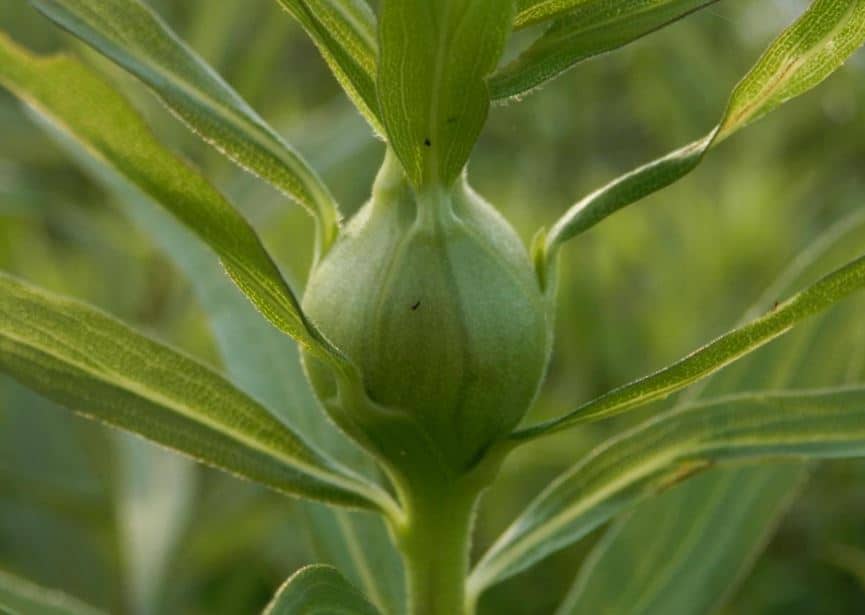The well-known wildflower known as goldenrod is found throughout eastern and central North America, and it is a host plant for the goldenrod gall fly larvae (Eurosta solidaginis). The larvae are not visible; instead, they hide within a goldenrod gall, where they feed and develop safely away from predators. The complete life cycle of the goldenrod gall fly is intriguing. Learn more about this fascinating fly by reading on.

About Goldenrod Wildflowers
A weedy perennial plant, goldenrod is a member of the Asteraceae, often known as the Aster family. This wildflower has more than 150 species and may be found in prairies, fields, along the sides of highways, and in other disturbed places. The goldenrod gall fly produces inflated balls-shaped galls associated with this often invasive plant.
For the female goldenrod gall fly, not all types of goldenrod are ideal for egg laying. Her meticulousness extends to “tasting” each plant using the chemical sensors on her feet and antennae until she selects the ideal plant to deposit her eggs. She prefers Canadian goldenrod, late goldenrod, or gigantic goldenrod.
The Goldenrod Gall Fly Life Cycle
The goldenrod plant is important to the gall fly’s whole life cycle. Males sit on goldenrod in the spring, dance, and flap their wings to entice females. They mate when the female chooses the male.
The female then inserts the fertilized eggs into the chosen goldenrod plant’s terminal bud. While females may produce hundreds of eggs, each stems only develops one gall. The eggs take several days to hatch into small, white to cream-colored larvae, immediately feeding within the stem.
The plant grows unnaturally due to a chemical in the larval fly’s saliva, producing more cells and developing a gall around three weeks after the eggs are placed.
Goldenrod
Gall The gall initially has the same green hue as the stem of the goldenrod. But eventually, the gall enlarges to roughly the size of a golf ball and develops a red or purple color. The tissue inside the gall is stiff and has the consistency of wet wood.
The gall does not seem to harm the plant, as it continues to bloom despite the surrounding leaves turning dark and withering.
The larvae molt twice while feeding during the summer. The larva chews a tunnel to the gall’s surface to emerge in the spring. The developed larvae spend the winter within the gall, emerging in the spring utilizing the established escape route.
More Information about Goldenrod Gall
The fly larvae are protected within the galls but still vulnerable to predators. In addition to certain birds, such as the downy woodpecker or the black-capped chickadee, which feed on the larvae, two species of wasps utilize the larvae as parasites to raise their young. Moreover, the galls are often harvested by fishermen who use the larvae as bait.
The bigger birds prefer larger galls, while parasitic wasps utilize smaller galls. Because of the size of the galls in a given location, it is simple to determine which predator is most prevalent.
Other species than goldenrod gall flies cause galls on the plant. The moth Gnormimoschema Galle solidaginis forms small, oval galls on stems. In contrast, the goldenrod bunch gall midge Rhopalomya solidaginis causes a puckered, rosette-shaped cluster of leaves to develop in the terminal bud of the Canadian goldenrod.

